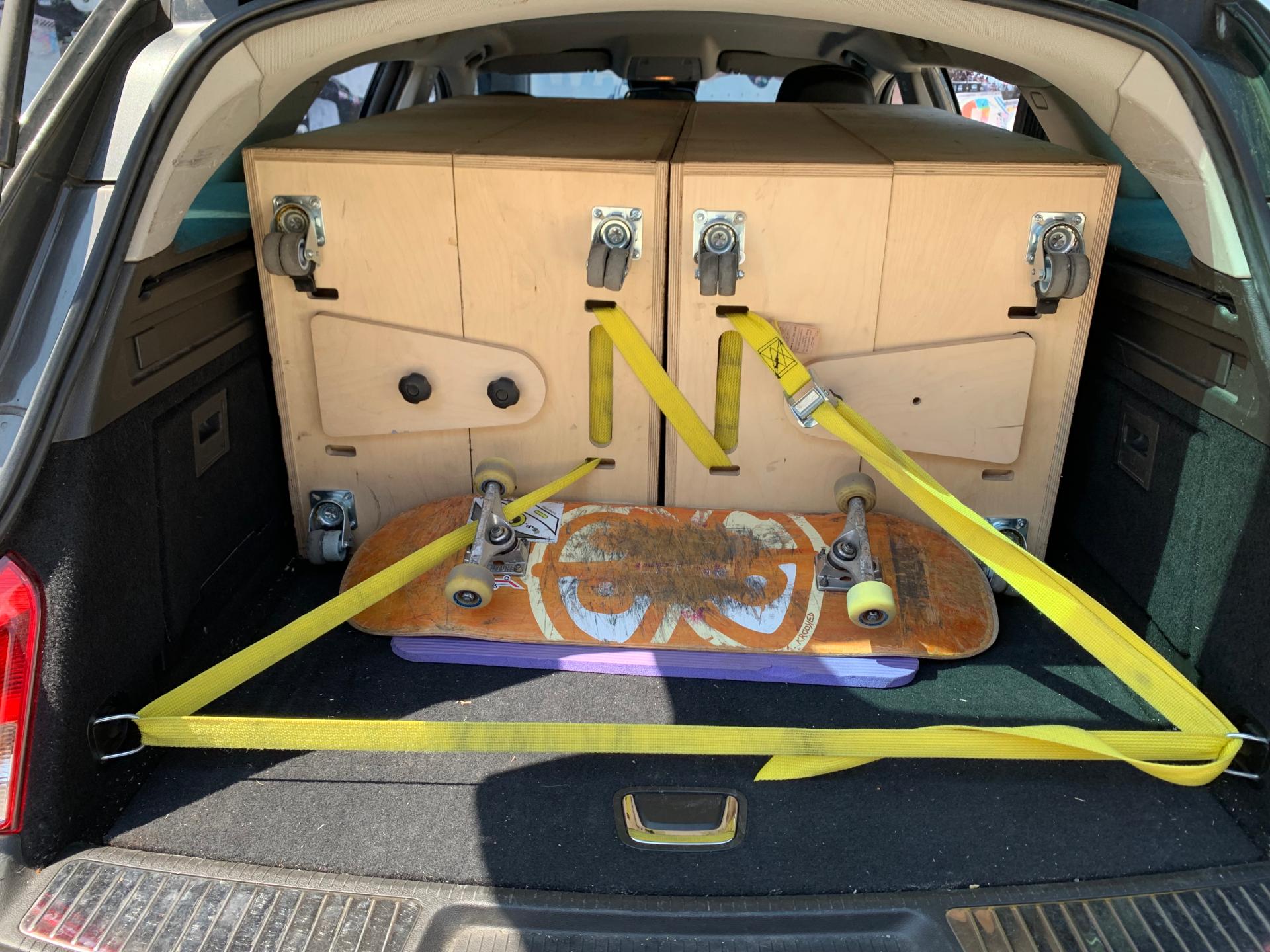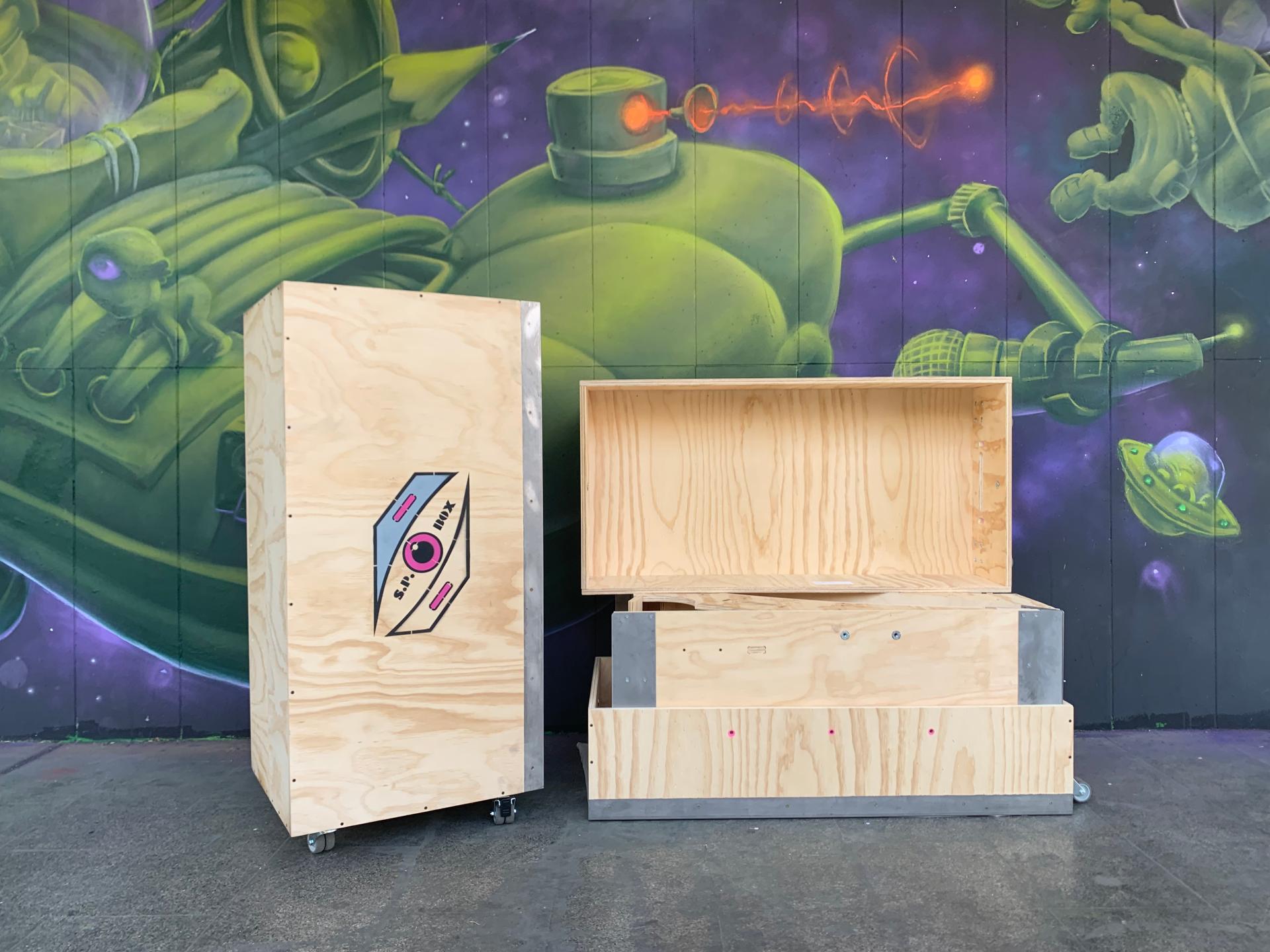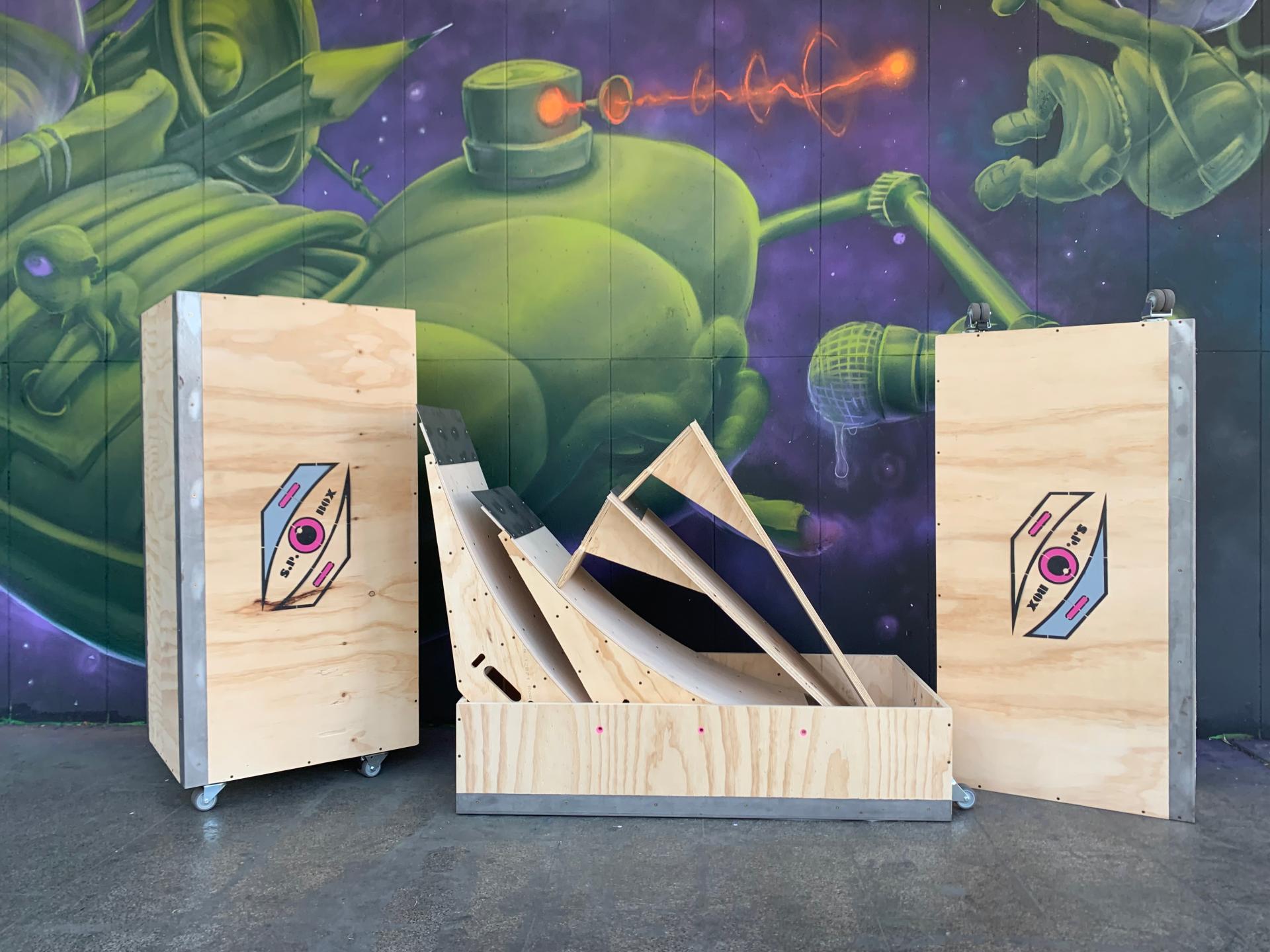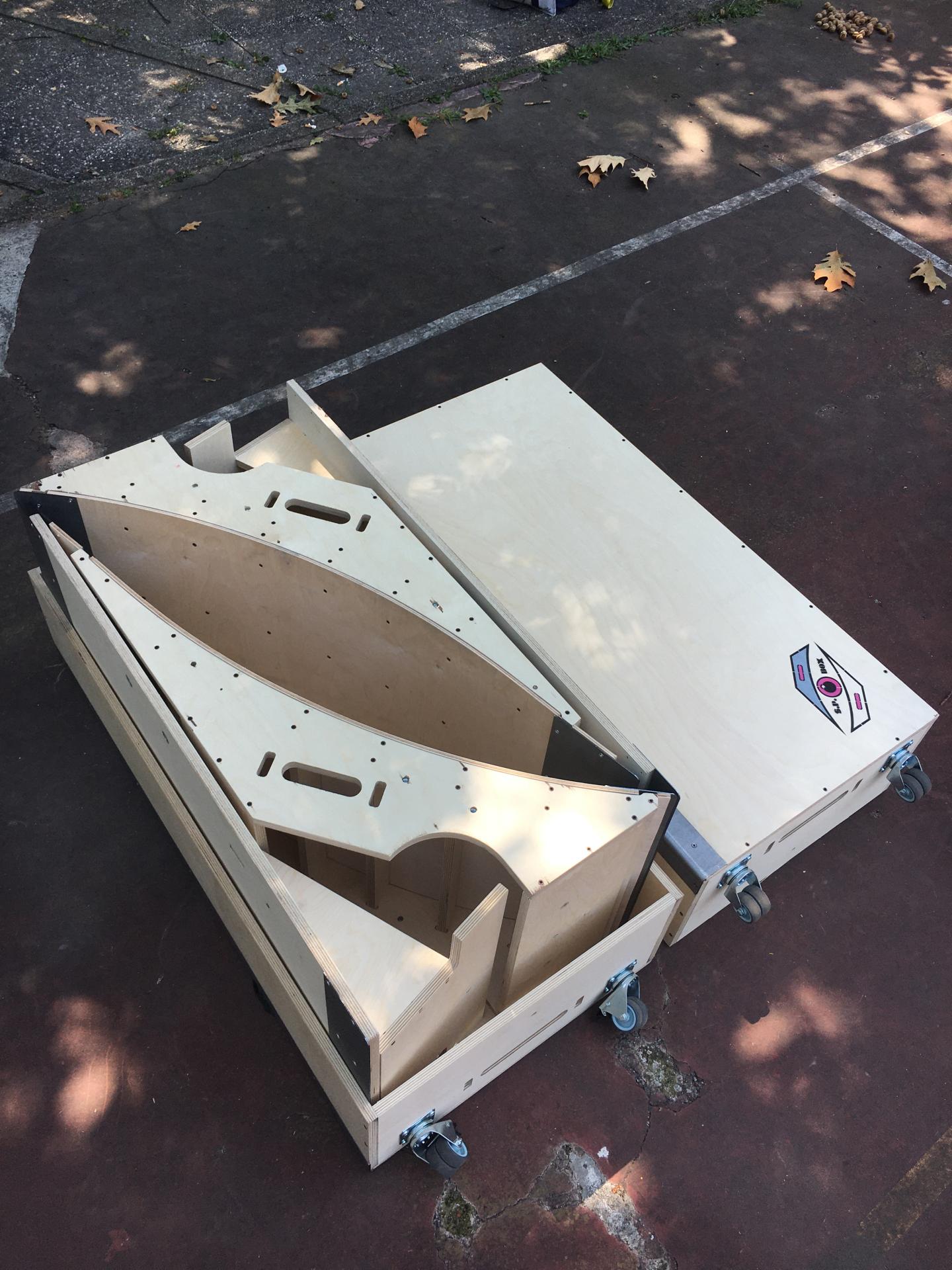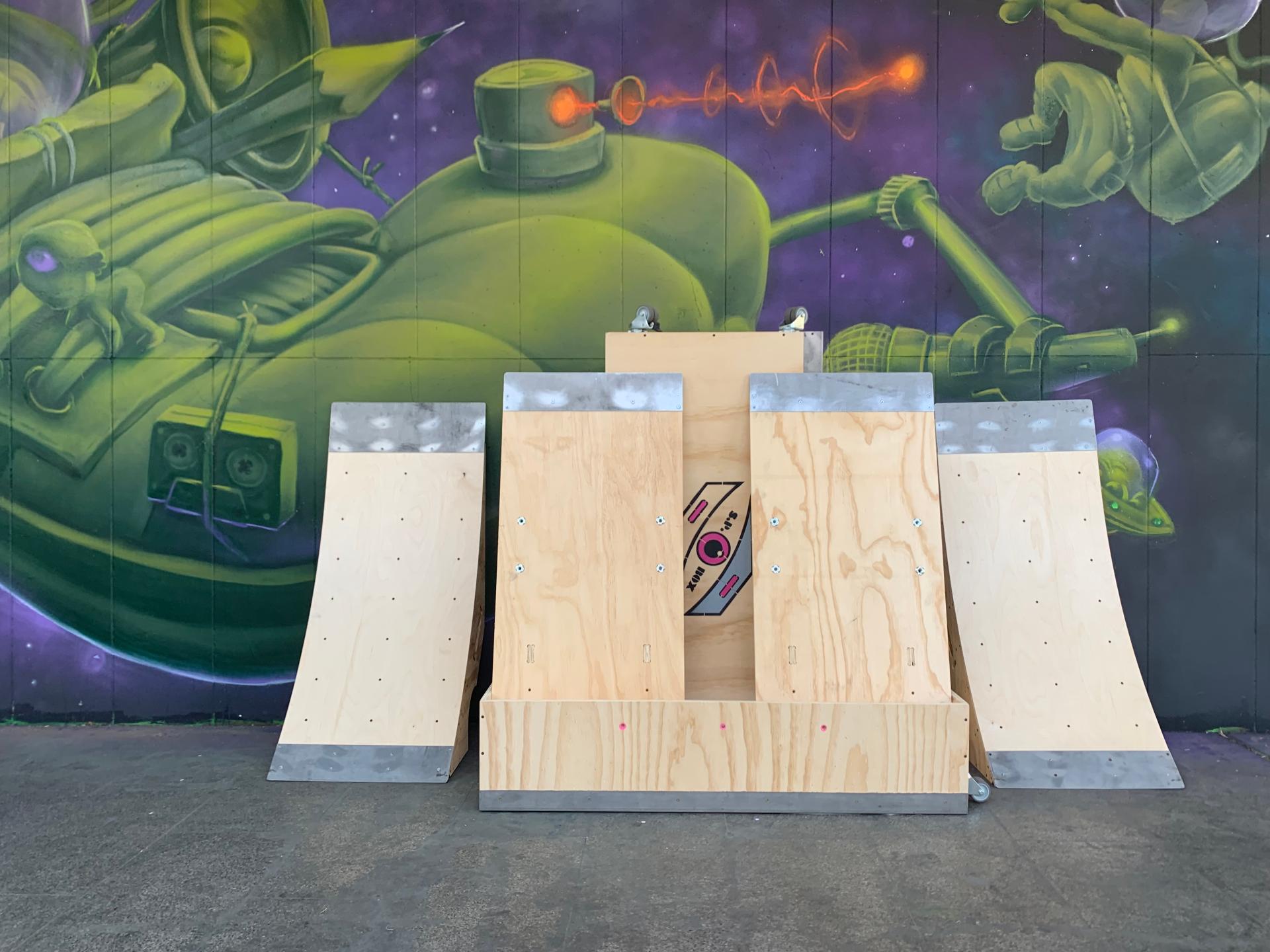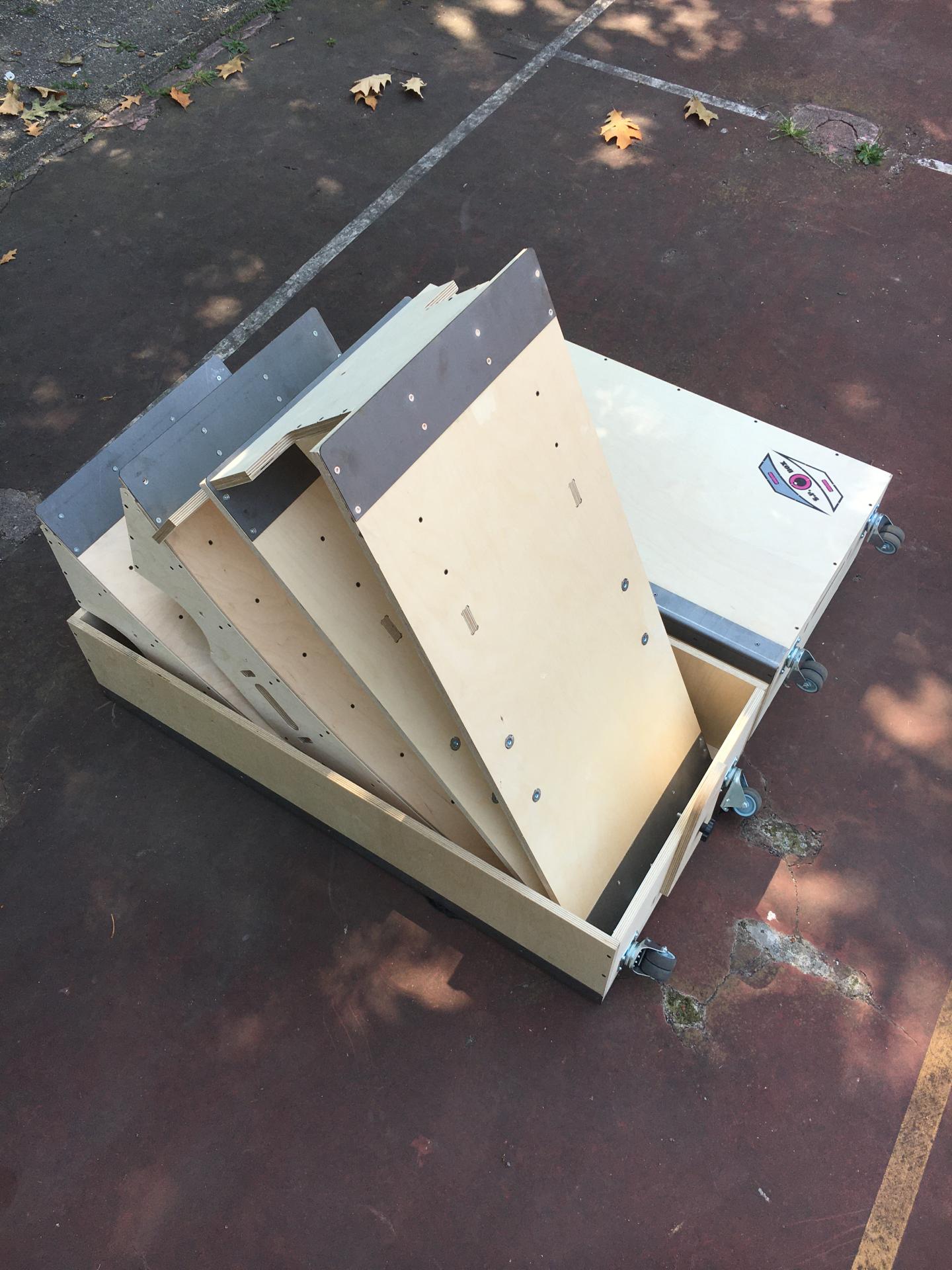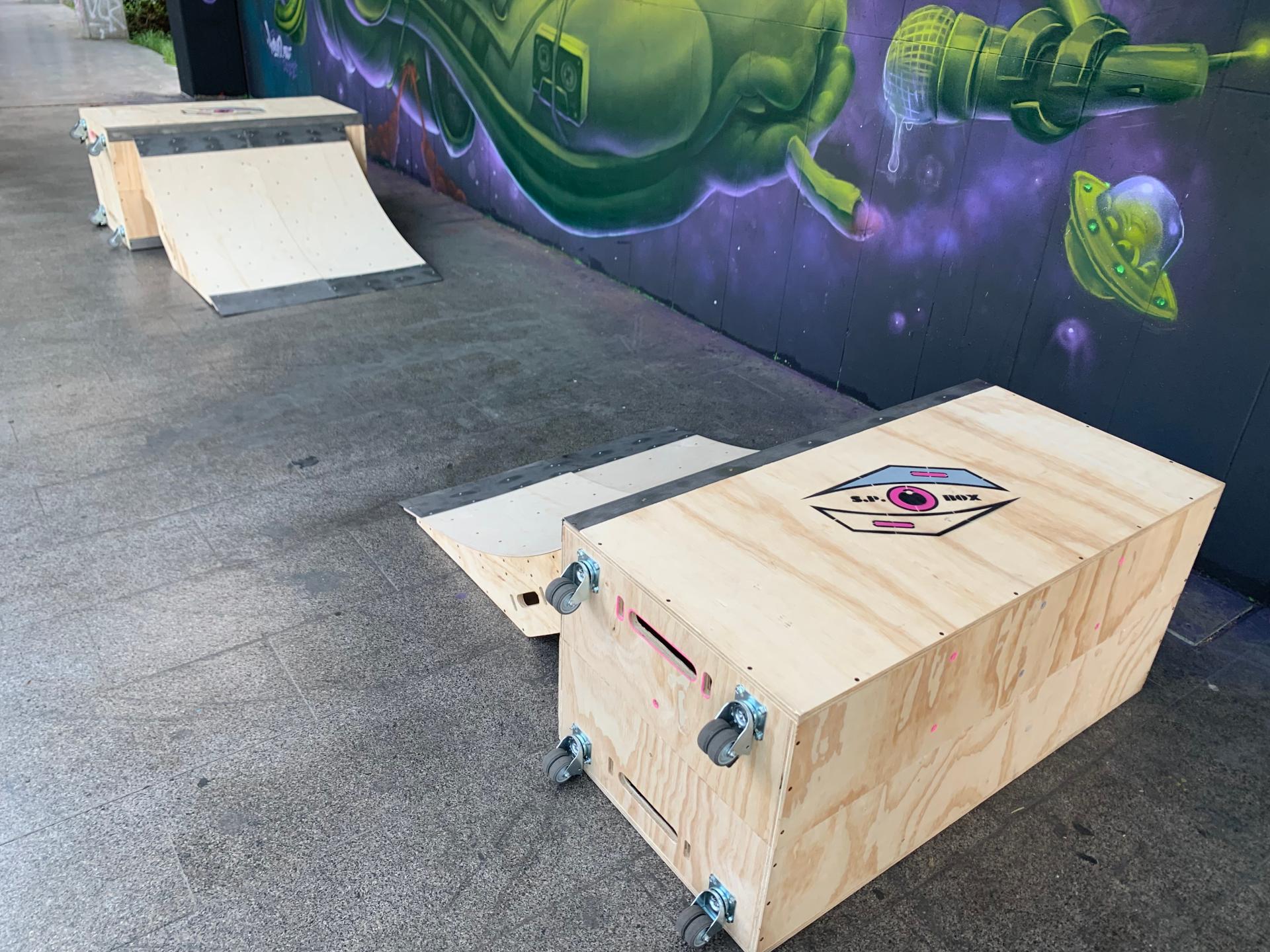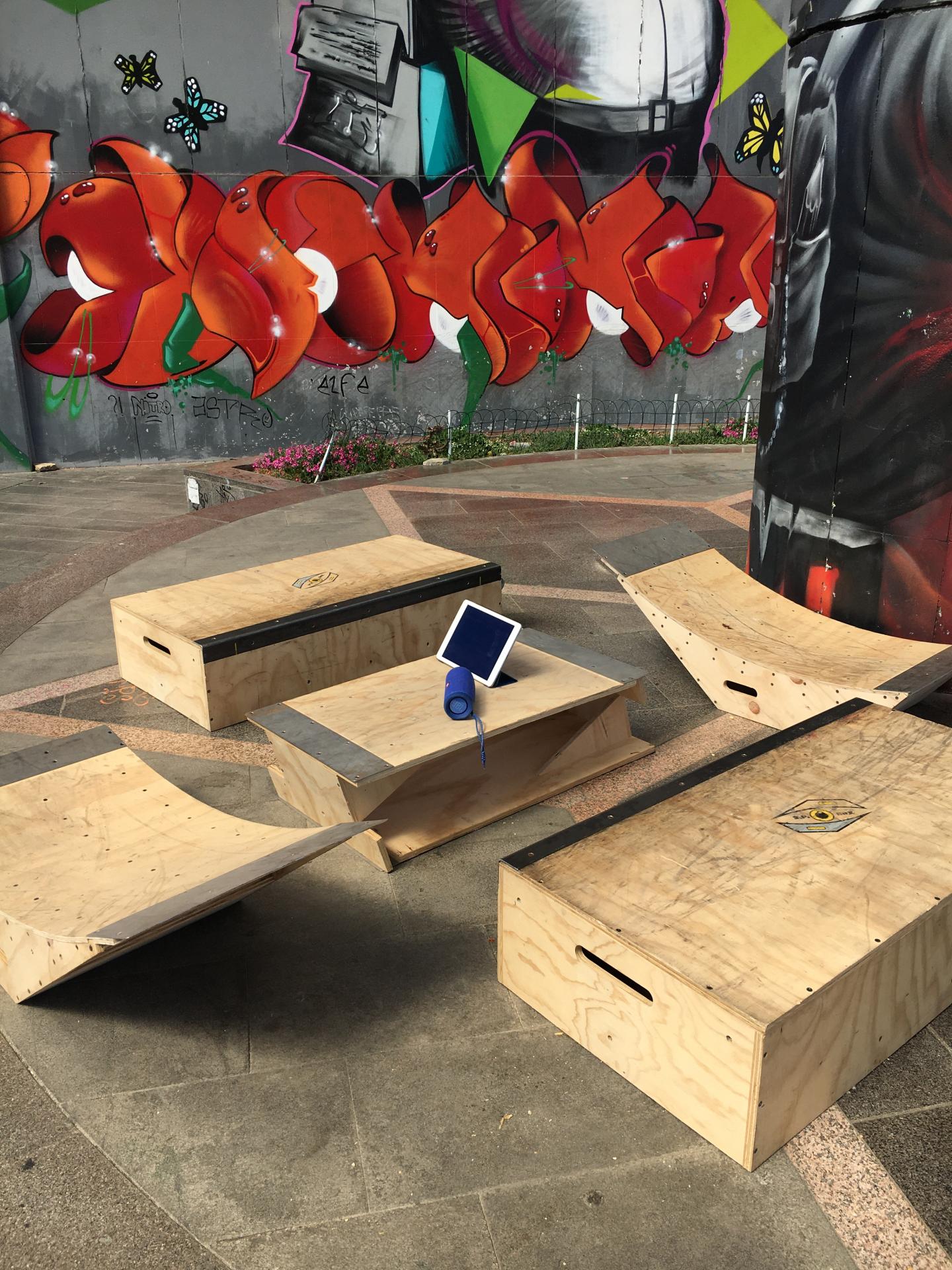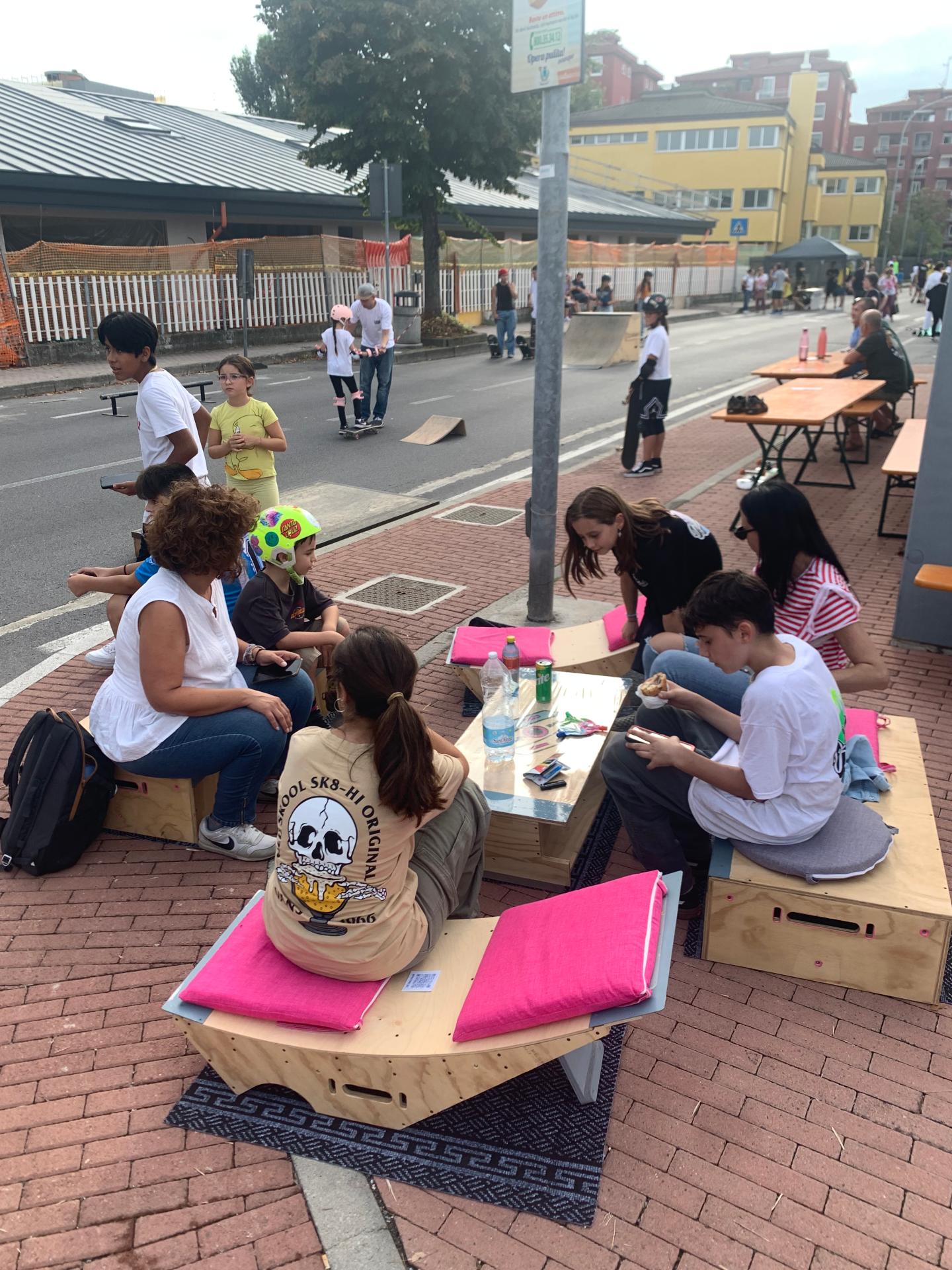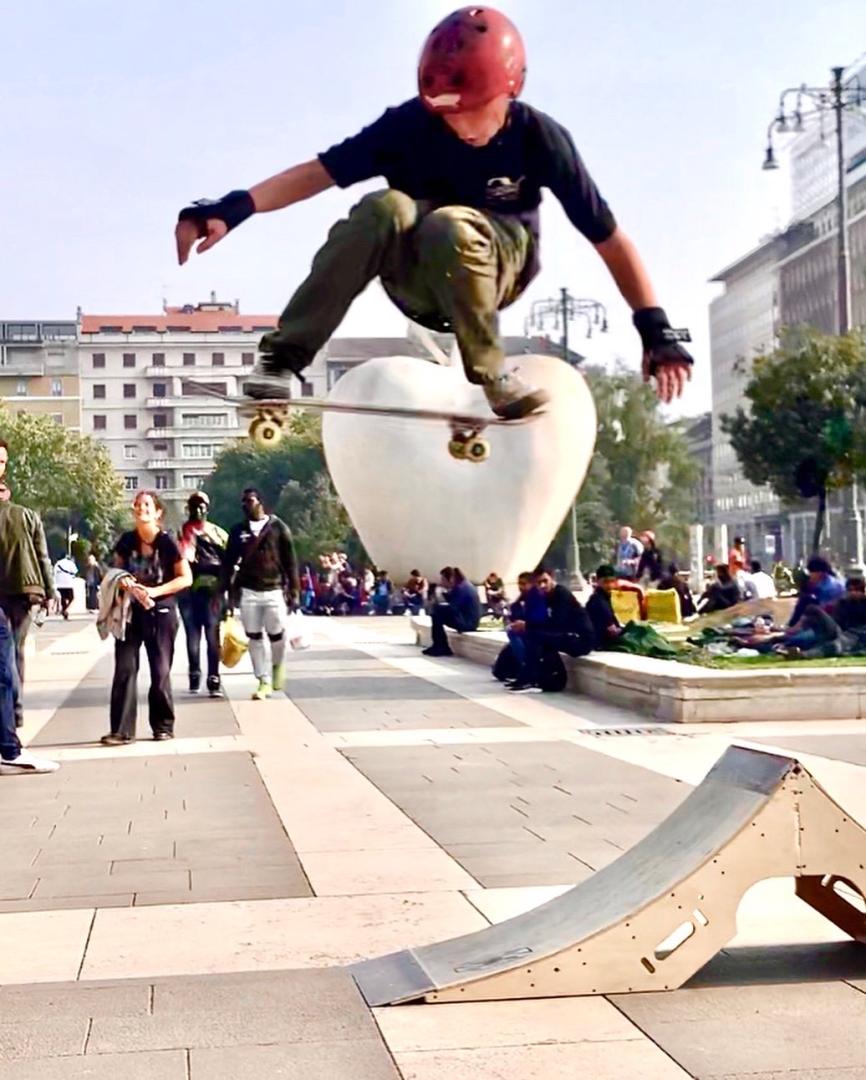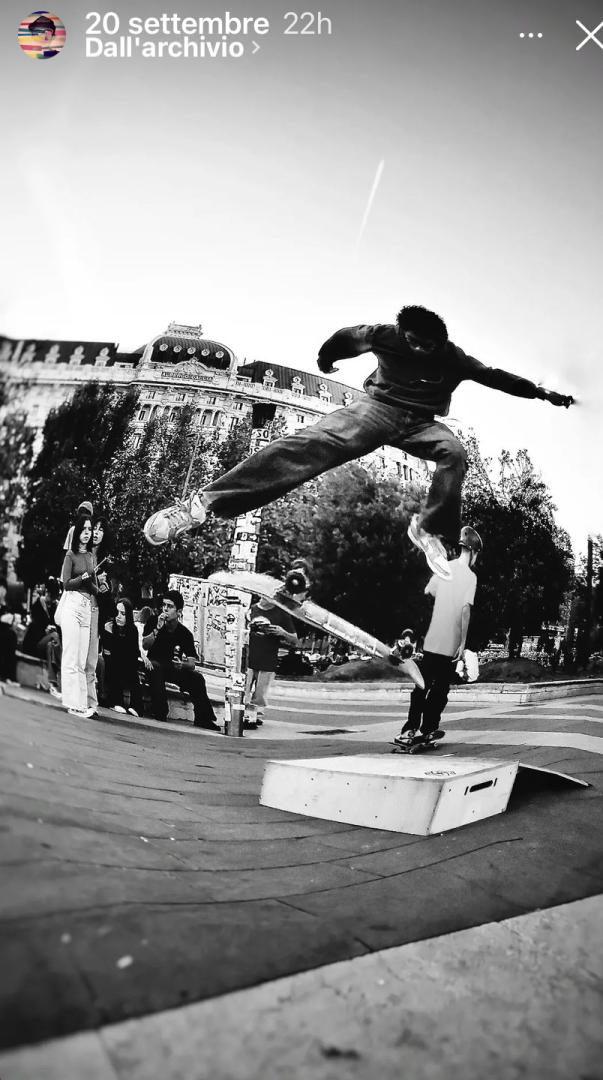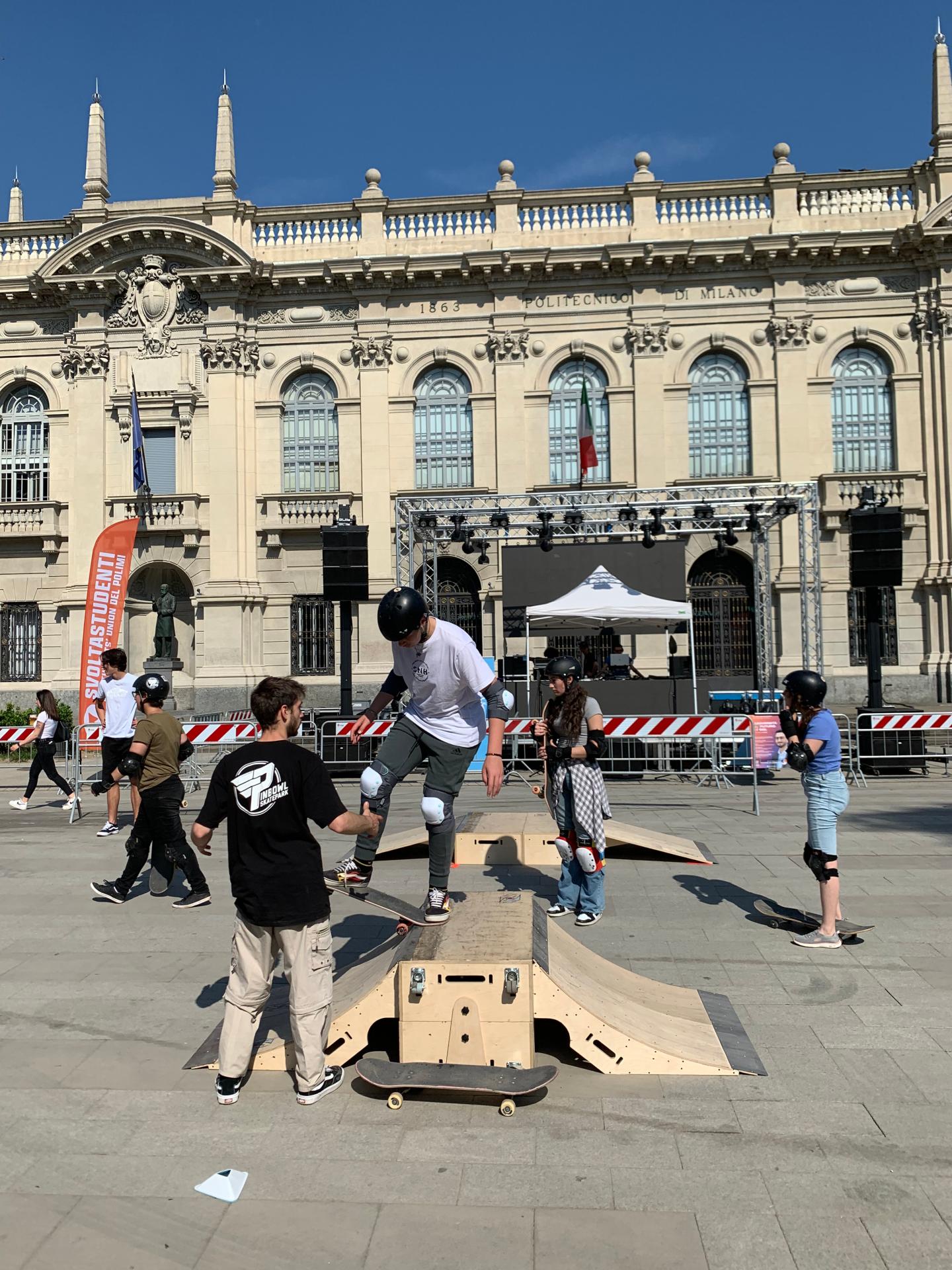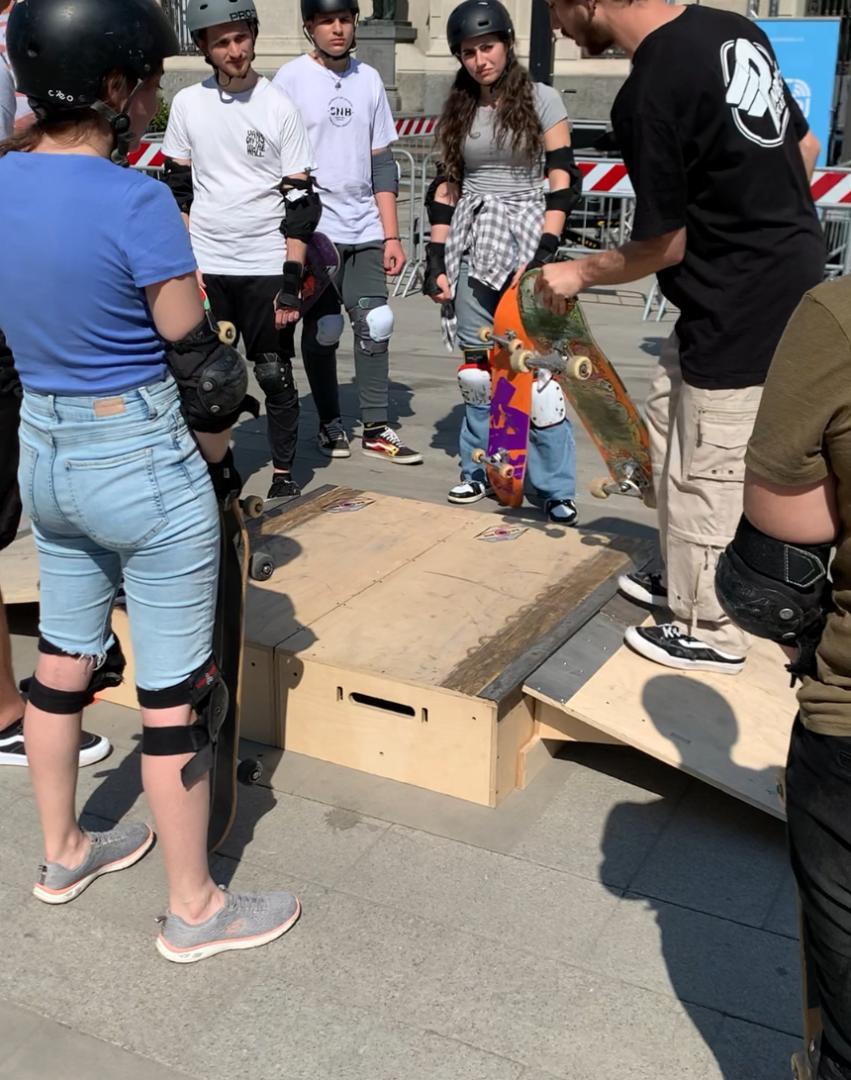Streetbox
Basic information
Project Title
Streetbox
Full project title
Streetbox
Category
Prioritising the places and people that need it the most
Project Description
The Streetbox is a pocket skatepark but also a complete portable lounge, foldable in a wooden box, on wheels, measuring 110x55x50 cm, which contains 6 elements like a Matryoshka that allow multiple configurations.
Street Box has the superpower of transforming any urban space into an area equipped both for carrying out sports activities on wheels (skateboards, scooters, bmx, etc.) and for sitting together, reclaiming the city and its underused spaces. Maybe after shredding them!
Street Box has the superpower of transforming any urban space into an area equipped both for carrying out sports activities on wheels (skateboards, scooters, bmx, etc.) and for sitting together, reclaiming the city and its underused spaces. Maybe after shredding them!
Geographical Scope
Local
Project Region
Milan, Italy
Urban or rural issues
Mainly urban
Physical or other transformations
It refers to other types of transformations (soft investment)
EU Programme or fund
No
Description of the project
Summary
The Street Box was born in April 2020 during the Covid-19 pandemic, when a father and son passionate about skateboarding, not having facilities to practice their favorite sport in the surroundings of their home, had to work hard to find a solution “prioritising the places and people that need it the most” de facto.
The Street Box is a wooden container made up of 6 separate elements which, simply jointed together or by exploiting the space in which they are placed, allows to transform any urban parterre into an area equipped for wheeled sports (skateboards, scooters, BMX, etc. .). The Street Box, closed, measures 155x50x55cm, and can easily be transported by car or pushed thanks to its swivel wheels.
As well as being transformable, the Street Box is also a transgenerational urban mobile element, as it was designed by a father and son skaters, in addition to sporting activities, it can also be used by the elderly thanks to its configuration as a comfortable lounge where they can sit down to chat, play cards or chess.
Regardless of whether they are young or old, the Street Box is dedicated to all those people who live in places lacking public infrastructures for sport and leisure, with the aim of giving them a practical and economical tool through which to regain possession of parts of the their city often underutilized.
The Street Box is a wooden container made up of 6 separate elements which, simply jointed together or by exploiting the space in which they are placed, allows to transform any urban parterre into an area equipped for wheeled sports (skateboards, scooters, BMX, etc. .). The Street Box, closed, measures 155x50x55cm, and can easily be transported by car or pushed thanks to its swivel wheels.
As well as being transformable, the Street Box is also a transgenerational urban mobile element, as it was designed by a father and son skaters, in addition to sporting activities, it can also be used by the elderly thanks to its configuration as a comfortable lounge where they can sit down to chat, play cards or chess.
Regardless of whether they are young or old, the Street Box is dedicated to all those people who live in places lacking public infrastructures for sport and leisure, with the aim of giving them a practical and economical tool through which to regain possession of parts of the their city often underutilized.
Key objectives for sustainability
If sustainability is the equivalent integration of economic, environmental and social values, the Streetbox is an exemplary project because, from an economic point of view, with a cost (including design and construction) of a few hundred euros it produces an enhancement of urban space comparable to that resulting from investments worth thousands of euros. Furthermore, the Streetbox project, as well as being scalable in terms of production and diffusion, could also be commercialized in two different forms: through blueprints (CNC files and assembly instructions) according to the DIY logic (typical of skateboarders) of the Digital Fabrication, or more simply as a finished product.
From an environmental point of view, the Streetbox - as already written - transforms any physical space in which it is placed, regardless of its configuration, into a playground and/or a quality public space (living room configuration), intervening in a tangible way, albeit temporary, on the city and our habitat. Furthermore, the environmental cost of its production is very low: currently low quality FSC wood is used; while the medium-long term task is to be able to use plastic materials coming from urban recycling.
Instead, from a social point of view, the Streetbox is inclusive in many facets: the project is the result of continuous discussion with spontaneous stakeholders; it is transgenerational and can be used by anyone in many different ways; it allows citizens to use urban space more freely, comfortably and safely; it is a mobile infrastructure that has the final objective of increasing urban social capital through sport and its values.
From an environmental point of view, the Streetbox - as already written - transforms any physical space in which it is placed, regardless of its configuration, into a playground and/or a quality public space (living room configuration), intervening in a tangible way, albeit temporary, on the city and our habitat. Furthermore, the environmental cost of its production is very low: currently low quality FSC wood is used; while the medium-long term task is to be able to use plastic materials coming from urban recycling.
Instead, from a social point of view, the Streetbox is inclusive in many facets: the project is the result of continuous discussion with spontaneous stakeholders; it is transgenerational and can be used by anyone in many different ways; it allows citizens to use urban space more freely, comfortably and safely; it is a mobile infrastructure that has the final objective of increasing urban social capital through sport and its values.
Key objectives for aesthetics and quality
The city has a boundless ammount of underused, abandoned or unexploited surfaces and infrastructural elements just waiting to be discovered. The Streetbox is an innovative tool for discovering and using these urban spaces by any citizen. For enthusiasts of sports on wheels, the Streetbox is a way to practice their sports in any peripheral neighborhood and/or suburb without infrastructures but where it will certainly not be difficult to find a large concrete surface such as a car park, a service road, a clearing space, etc. For all other citizens, the Streetbox is a means of exploiting degraded and abandoned spaces, even just by sitting comfortably in its living room configuration.
Furthermore, the Streetbox, by allowing just those urban spaces usually considered dangerous (due to degradation, hygiene levels, illicit or even criminal uses, etc.) to be "domesticated" for new uses, guarantees more pleasant and fulfilling urban experiences for all citizens.
From a practical point of view, the Streetbox is designed to be transported, assembled and set up/configured anywhere easily, quickly and safely, without the use of tools but only by using the joints of its elements.
Furthermore, the Streetbox, by allowing just those urban spaces usually considered dangerous (due to degradation, hygiene levels, illicit or even criminal uses, etc.) to be "domesticated" for new uses, guarantees more pleasant and fulfilling urban experiences for all citizens.
From a practical point of view, the Streetbox is designed to be transported, assembled and set up/configured anywhere easily, quickly and safely, without the use of tools but only by using the joints of its elements.
Key objectives for inclusion
Inclusion is perhaps one of the most founding values of sport and in particular of skateboarding (which has been an Olympic discipline since 2020): a sport accessible to all due to the low costs of the necessary equipment (just a skateboard) and the technical-physical needs requests to practice it (none). Because even before being a sport, skateboarding is a lifestyle, an inclusive and welcoming activity by its intrinsic nature. In fact, communities of skaters - an urban tribe between local nomadism and sedentary staying - have always contributed to channeling the exuberant energies of groups of kids, while letting them "play in the street" without running into the risks that this often entails.
And the Streetbox totally reflects its values: those of inclusion, freedom, accessibility, multifunctionality, and transgenerationality.
The Streetbox can be used by anyone for multiple purposes (from sports to street furniture) and in any context. It is economically accessible to everyone. It can be easily moved, for short distances on foot by pushing it, and for long distances by easily loading it into a normal car. The Streetbox unites generations and reflects the new social models of flexibility, alternation of uses, design for all and respect for others.
And the Streetbox totally reflects its values: those of inclusion, freedom, accessibility, multifunctionality, and transgenerationality.
The Streetbox can be used by anyone for multiple purposes (from sports to street furniture) and in any context. It is economically accessible to everyone. It can be easily moved, for short distances on foot by pushing it, and for long distances by easily loading it into a normal car. The Streetbox unites generations and reflects the new social models of flexibility, alternation of uses, design for all and respect for others.
Results in relation to category
28/08/2020
We started a small production of 4 Streetbox full kit (every full kit is made by 6 elements, 2 manual pads that are the shells, 2 mini-banks, 2 mini-quarters), mixing these 6 elements is possible to obtain a lot of different setups that can reproduce the typical structures of a real skatepark.
26/02/2021
We gave 2 full kit to two different milanese skate school, the Pinbowl and SkateMi, to use them with their learners.
24/05/2022 – Milan, Politecnico di Milano (University)
We made a collaboration with Vans Europe and Pinbowl skate academy, outside the Politecnico di Milano, more than 50 students divided by groups had fun using our Streetbox, learning and practicing skateboard.
Every Sunday
We carried our Streetbox in a popular square in the suburbs of Milan, the Barona district, to let everybody skating with friends.
11/09/2022 – Burago (MI)
We were invited to a sport festival day in Burago a small town near Milan, a day of fun, music, sharing time together. More than 30 young skaters participated at the event.
The basket court became a temporary skatepark thanks to the Streetbox, that was the request of the young people of Burago where was not possible to build a real skatepark.
18/09/2022
Some skaters asked us to bring the Streetbox into the most famous spot in Milan, the Central train Station, where more than 50 skaters started to use it and have fun learning all the different settings.
19/04/2023
A group of contemporary artists invited us to expose the Streetbox living room configuration at the FuoriSalone del Mobile, an international design event in Milano.
13/06/2023 – Opera (MI)
Another invitation to a sport festival in Opera city close to Milan, they invited us to let the people skate using our Streetbox and giving them lessons. More then 30 young participants.
We started a small production of 4 Streetbox full kit (every full kit is made by 6 elements, 2 manual pads that are the shells, 2 mini-banks, 2 mini-quarters), mixing these 6 elements is possible to obtain a lot of different setups that can reproduce the typical structures of a real skatepark.
26/02/2021
We gave 2 full kit to two different milanese skate school, the Pinbowl and SkateMi, to use them with their learners.
24/05/2022 – Milan, Politecnico di Milano (University)
We made a collaboration with Vans Europe and Pinbowl skate academy, outside the Politecnico di Milano, more than 50 students divided by groups had fun using our Streetbox, learning and practicing skateboard.
Every Sunday
We carried our Streetbox in a popular square in the suburbs of Milan, the Barona district, to let everybody skating with friends.
11/09/2022 – Burago (MI)
We were invited to a sport festival day in Burago a small town near Milan, a day of fun, music, sharing time together. More than 30 young skaters participated at the event.
The basket court became a temporary skatepark thanks to the Streetbox, that was the request of the young people of Burago where was not possible to build a real skatepark.
18/09/2022
Some skaters asked us to bring the Streetbox into the most famous spot in Milan, the Central train Station, where more than 50 skaters started to use it and have fun learning all the different settings.
19/04/2023
A group of contemporary artists invited us to expose the Streetbox living room configuration at the FuoriSalone del Mobile, an international design event in Milano.
13/06/2023 – Opera (MI)
Another invitation to a sport festival in Opera city close to Milan, they invited us to let the people skate using our Streetbox and giving them lessons. More then 30 young participants.
How Citizens benefit
Skateboarding is often opposed by some segments of civil society due to the possible and probable damages it can cause on elements of public space such as benches, stairways and handrails. This happens precisely where stable infrastructures such as skateparks are not foreseen or possible for economic reasons. The Streetbox pragmatically solves this problem, offering a mobile, foldable, temporary and transportable structure right where it is needed.
Furthermore, thanks to its transportability and temporary nature, it was possible to collect comments and suggestions from the various communities of skaters where the Streetbox was set up right from the initial stages of the creation of the first prototype, recording the observations of the first users and integrating them into subsequent prototypes.
The natural solidarity between skaters and their DIY attitude helped in this. Furthermore, by providing a solution for a more organized sharing of the public space in which skateboarding is practiced where there are no special structures, it has also met with the favor of non-skater citizens who have identified the Streetbox as part of the solution to conflicts linked to the use of public space.
Furthermore, thanks to its transportability and temporary nature, it was possible to collect comments and suggestions from the various communities of skaters where the Streetbox was set up right from the initial stages of the creation of the first prototype, recording the observations of the first users and integrating them into subsequent prototypes.
The natural solidarity between skaters and their DIY attitude helped in this. Furthermore, by providing a solution for a more organized sharing of the public space in which skateboarding is practiced where there are no special structures, it has also met with the favor of non-skater citizens who have identified the Streetbox as part of the solution to conflicts linked to the use of public space.
Physical or other transformations
It refers to other types of transformations (soft investment)
Innovative character
We can say that inside the field of the new young people life style that lives the outskirts of big cities or in places where there are few chances to join life together spending time training new generation sports, the Streetbox offers a huge range of freedom compare to the other similar structures existing until now.
All the other structures are no transportable and no foldable, no transformable, no adaptable to every spot indoor or outdoor. Thanks to the original cut of the 6 elements that are composing the Streetbox it is possible to recreate the most common structures of a normal skatepark. In this case the Streetbox represent a unique solution, and let’s not forget that, after having fun with friends using it like a skatepark, it is possible to transform the Streetbox into a real living room to enjoy and relax all together. Even in that case the Streetbox represent a unique solution.
All the other structures are no transportable and no foldable, no transformable, no adaptable to every spot indoor or outdoor. Thanks to the original cut of the 6 elements that are composing the Streetbox it is possible to recreate the most common structures of a normal skatepark. In this case the Streetbox represent a unique solution, and let’s not forget that, after having fun with friends using it like a skatepark, it is possible to transform the Streetbox into a real living room to enjoy and relax all together. Even in that case the Streetbox represent a unique solution.
Disciplines/knowledge reflected
The Streetbox project is a melting pot of contemporary design dedicated to satisfy needs and requests of the new urban and common areas that must be shared by different citizens. It’s a mix of Italian craftsman ship and new concept of design reinterpretation of urban spaces.
The idea of the Streetbox was born in a living room, during the lockdowns due to the Covid-19 pandemic, by two skaters (father and son) who did not have the opportunity to practice their favorite sport as it was impossible to reach urban parks equipped with the necessary facilities .
The Streetbox solved the problem by allowing any waterproof urban surface to be transformed into a skatepark.
The first necessary skill was therefore that of Do It Yourself (DIY), to which was added the experience of skaters and the persistence in achieving the set goal.
Streetbox deals with product design, with tactical urbanism and reprogramming the city, with the physics of skateboarding and the digital fabrication.
The idea of the Streetbox was born in a living room, during the lockdowns due to the Covid-19 pandemic, by two skaters (father and son) who did not have the opportunity to practice their favorite sport as it was impossible to reach urban parks equipped with the necessary facilities .
The Streetbox solved the problem by allowing any waterproof urban surface to be transformed into a skatepark.
The first necessary skill was therefore that of Do It Yourself (DIY), to which was added the experience of skaters and the persistence in achieving the set goal.
Streetbox deals with product design, with tactical urbanism and reprogramming the city, with the physics of skateboarding and the digital fabrication.
Methodology used
The methodology and approach used for the design and construction of the Streetbox are those of empiricism, Do It Yourself and Prosuming, both of the Streetbox itself and of the city and public space.
The Streetbox was not born from expert designers or long-time carpenters, but like almost everything that has ever revolutionized the world of skateboarding, it was born mainly from the enthusiasm of a teenager and the love of his father (who was also a skater). It would therefore be difficult to "invent" a methodology a posteriori; while the type of approach is evident: that of problem solving, DIY and adaptive and for all design.
The Streetbox was not born from expert designers or long-time carpenters, but like almost everything that has ever revolutionized the world of skateboarding, it was born mainly from the enthusiasm of a teenager and the love of his father (who was also a skater). It would therefore be difficult to "invent" a methodology a posteriori; while the type of approach is evident: that of problem solving, DIY and adaptive and for all design.
How stakeholders are engaged
To obtain the final model of the Streetbox we passed through a lot of mistakes, we tried to make work together old craftsmen carpenters and young designers, making tests with expert skaters and using the prototypes in many different places.
The stakeholders were therefore all local, from producers to users, however they were heterogeneous from all points of view, providing original and constructive ideas, suggestions and observations. Given the nature of the Streetbox project, their involvement was completely spontaneous and, in the case of the skaters, mainly dictated by the desire to try out our the Streetbox.
The stakeholders were therefore all local, from producers to users, however they were heterogeneous from all points of view, providing original and constructive ideas, suggestions and observations. Given the nature of the Streetbox project, their involvement was completely spontaneous and, in the case of the skaters, mainly dictated by the desire to try out our the Streetbox.
Global challenges
Compared to the 17 Sustainable Development Goals (SDGs) or Global Goals designed by the United Nations to serve as a "shared blueprint for peace and prosperity for people and the planet, now and into the future", the Streetbox responds simultaneously to 7 global challenges and in particular those of:
- Good health and well-being (SDG 3)
because the Streetbox encourages the practice of roller sports and feeling good together.
- Quality education (SDG 4)
Because sport and the values it transmits are an integral part of quality training and Streetbox, as mentioned above, encourages this.
- Gender equality (SDG 5),
because skateboarding, in particular, is a sport that is first and foremost a lifestyle focused on respect for others, community, DIY, anti-speciesism and against any gender or racial discrimination.
- Industry, innovation and infrastructure (SDG 9)
because the Streetbox has not found any competitors on the market, proposing a new and innovative approach to the infrastructural problem of wheel sports.
- Reduced inequalities (SDG 10),
because the Streetbox, transforming any urban space into an equipped area, eliminates the distances between the services offered by the city center and those offered by the suburbs, making the necessary infrastructure accessible.
- Sustainable cities and communities (SDG 11)
because the Streetbox positively modifies urban space, making it usable, thus increasing the surface area available for urban relationships per capita and allowing communities to meet both to play sports and simply to sit together in an otherwise unused space.
- Peace, justice, and strong institutions (SDG 16)
as a lifestyle based on solidarity, DIY, respect for others and diversity, skateboarding is an instrument of peace and justice that could be better supported by institutions, making them stronger, precisely thanks to ideas like the Streetbox which front of a few euros profoundly modify the surrounding space.
- Good health and well-being (SDG 3)
because the Streetbox encourages the practice of roller sports and feeling good together.
- Quality education (SDG 4)
Because sport and the values it transmits are an integral part of quality training and Streetbox, as mentioned above, encourages this.
- Gender equality (SDG 5),
because skateboarding, in particular, is a sport that is first and foremost a lifestyle focused on respect for others, community, DIY, anti-speciesism and against any gender or racial discrimination.
- Industry, innovation and infrastructure (SDG 9)
because the Streetbox has not found any competitors on the market, proposing a new and innovative approach to the infrastructural problem of wheel sports.
- Reduced inequalities (SDG 10),
because the Streetbox, transforming any urban space into an equipped area, eliminates the distances between the services offered by the city center and those offered by the suburbs, making the necessary infrastructure accessible.
- Sustainable cities and communities (SDG 11)
because the Streetbox positively modifies urban space, making it usable, thus increasing the surface area available for urban relationships per capita and allowing communities to meet both to play sports and simply to sit together in an otherwise unused space.
- Peace, justice, and strong institutions (SDG 16)
as a lifestyle based on solidarity, DIY, respect for others and diversity, skateboarding is an instrument of peace and justice that could be better supported by institutions, making them stronger, precisely thanks to ideas like the Streetbox which front of a few euros profoundly modify the surrounding space.
Learning transferred to other parties
The Streetbox was created precisely to be widespread in all the cities of the world, both following its DIY attitude through digital fabrication channels and through its possible marketing as a finished product.
The production cost of the Streetbox is low, around 800/1000 euros.
The materials with which it is made are highly available, and in the medium-long term we could also use recycled plastic materials.
The technologies used are very simple and the necessary know-how can be found in any fablab.
The Streetbox, as a pocket skatepark and/or a foldable lounge, can be installed in any city in the world: from the poorest ones to the degraded suburbs of the richest ones.
The production cost of the Streetbox is low, around 800/1000 euros.
The materials with which it is made are highly available, and in the medium-long term we could also use recycled plastic materials.
The technologies used are very simple and the necessary know-how can be found in any fablab.
The Streetbox, as a pocket skatepark and/or a foldable lounge, can be installed in any city in the world: from the poorest ones to the degraded suburbs of the richest ones.
Keywords
Sharing public space
Digital fabrication
Adaptive and transgenerational design
Security of public space
Prosuming public space

